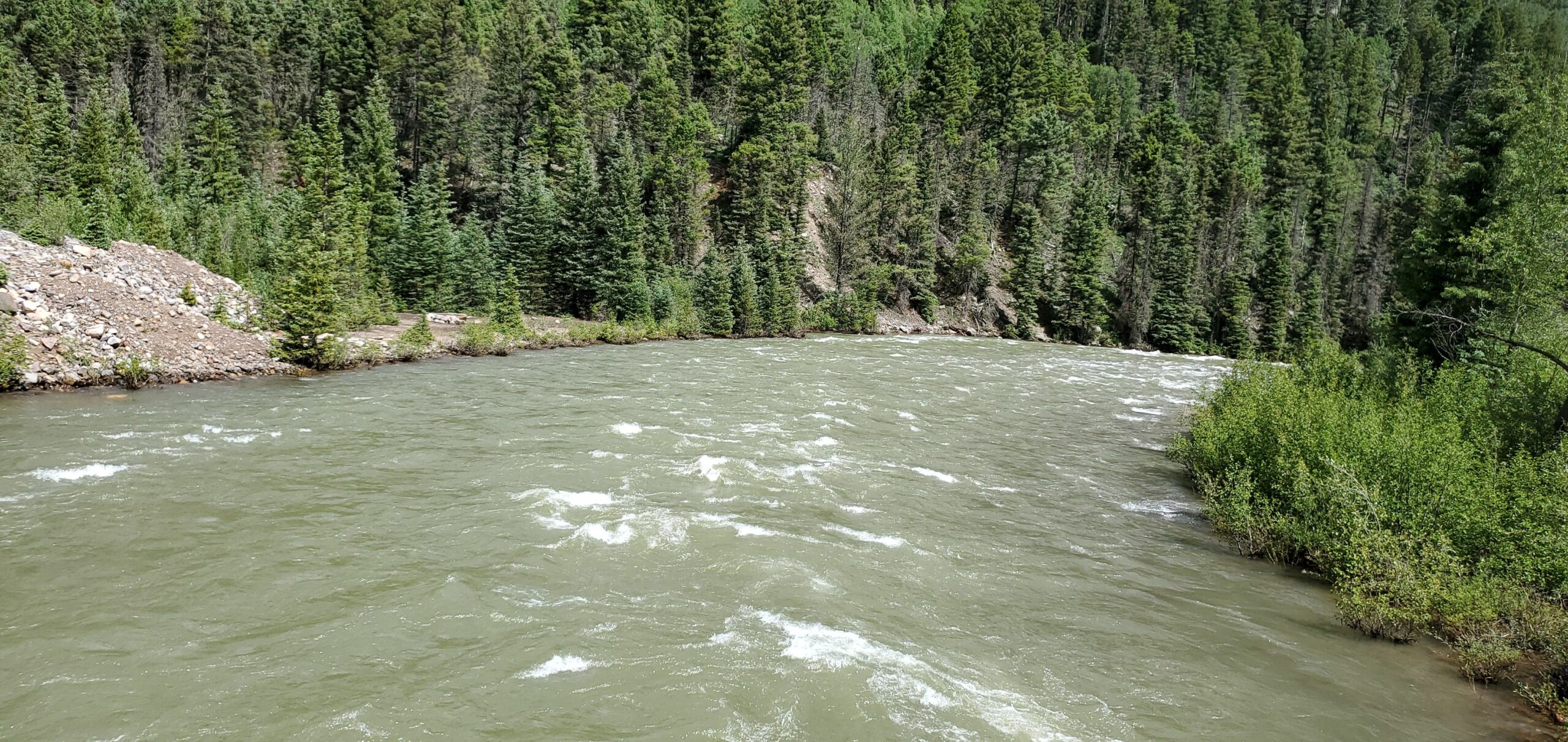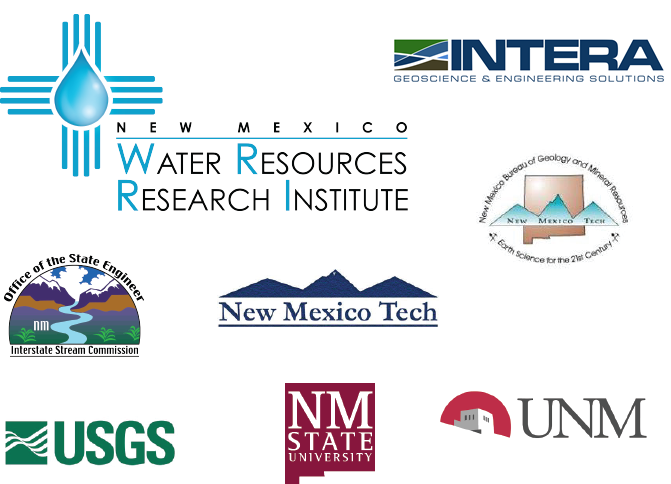


THIS WEBSITE AND VISUALIZATIONS HEREIN ARE IN BETA VERSIONS AND ARE CONTINUALLY BEING UPDATED.
Historical and future scenario visualizations are available below and the historical data is included within the future scenario visualizations.

The New Mexico Dynamic Statewide Water Budget (NMDSWB) is a multi-year effort to account for the origin and fate of New Mexico’s water supply. Based in a system dynamics framework, the NMDSWB model aggregates monthly water stocks and fluxes for four mass balance accounting units (MBAUs) which include counties, water planning regions, river basins, and statewide. The model estimates how much water moves through the stocks and fluxes within the MBAUs for a historical period and into the future. The historical period of the model is based on data and modeled estimates from 1975-2011. The future scenario period of the model was created to provide statewide estimates of water use and availability from 2012-2100, where many of the future water stock and flux estimates are calibrated from the historical model. This future scenario period is an extension of the historical model, but uses a different set of logic to solve for a different set of unknowns in the absence of observed data. In the historical period, the water budgets for each MBAU (e.g. counties) are calculated independently of one another based on available historical data. In the future scenario period, the NMDSWB links hydrologically connected MBAUs from upstream to downstream to enforce mass balances. As water flows through the system, the mass balance of water is maintained for each accounting unit and any remaining surface water flows into the next downstream unit. This hydrologic connection prevents water from being “double counted” and allows insight to how upstream diversions affect downstream flows. Furthermore, the future period of the model uses three scenario inputs that help drive the model in place of observed historical data. The three scenario inputs are climate change, population growth, and water use efficiency.
The climate change input has the largest impact on water supply within the future period of the model. Future temperature, precipitation, and streamflow inputs in the NMDSWB are derived from one of four separate Global Circulation Model runs spanning three different climate emission scenarios. The population growth scenario can be used to alter the predicted population changes (UNM BBER, 2014) to determine the effects on public and domestic water use. The water use efficiency scenario changes the agricultural and human use (municipal and domestic per-capita water use rates) efficiencies. Through the historical and future periods of the model, users can compare trends in water use and supply, and be able to better understand how water use and availability temporally and spatially varies within New Mexico.
The New Mexico Water Resources Research Institute makes no warranties, express or implied, as to the use of the information obtained from this data product. All information included with this product is provided without warranty or any representation of accuracy and timeliness of completeness. Users should be aware that changes may have occurred since this data set was collected and that some parts of this data may no longer represent actual conditions. This information may be updated without notification. Users should not use this data for critical applications without a full awareness of its limitations. This product is for informational purposes only and may not be suitable for legal, engineering, or surveying purposes. The New Mexico Water Resource Research Institute shall not be liable for any activity involving these data, installation, fitness of the data for a particular purpose, its use, or analyses results.